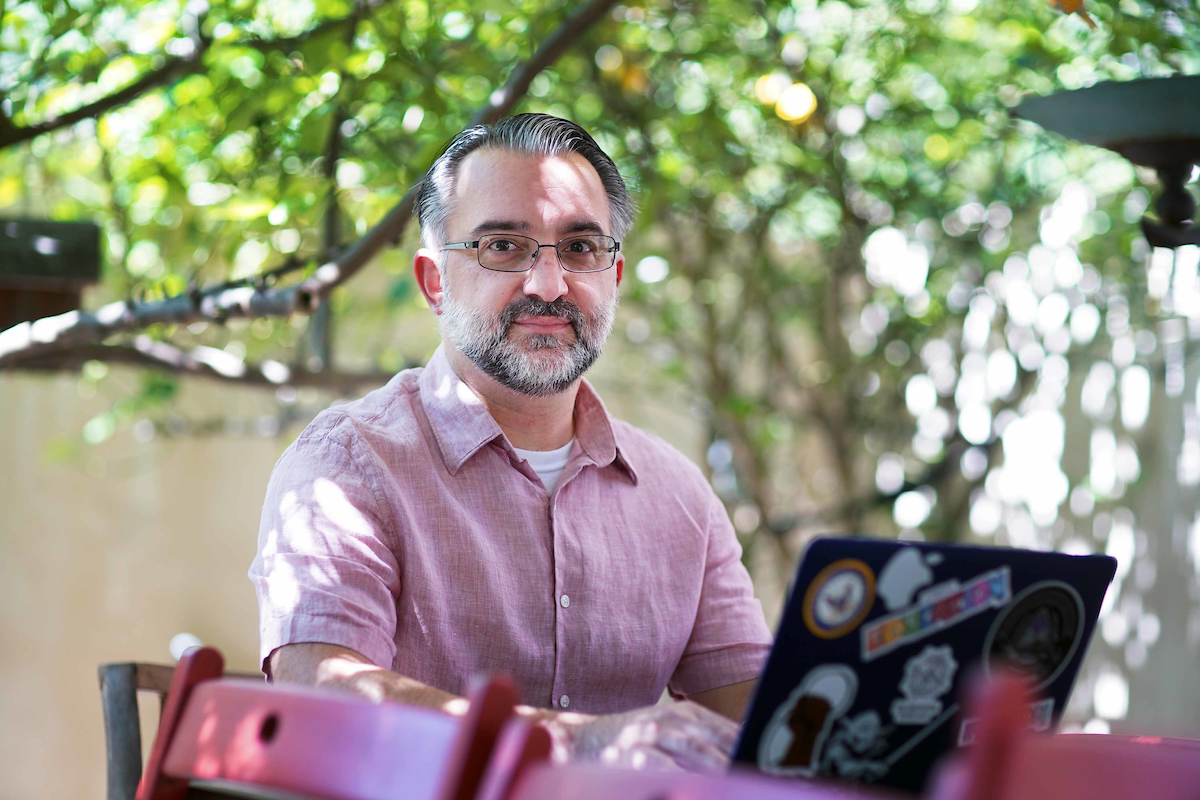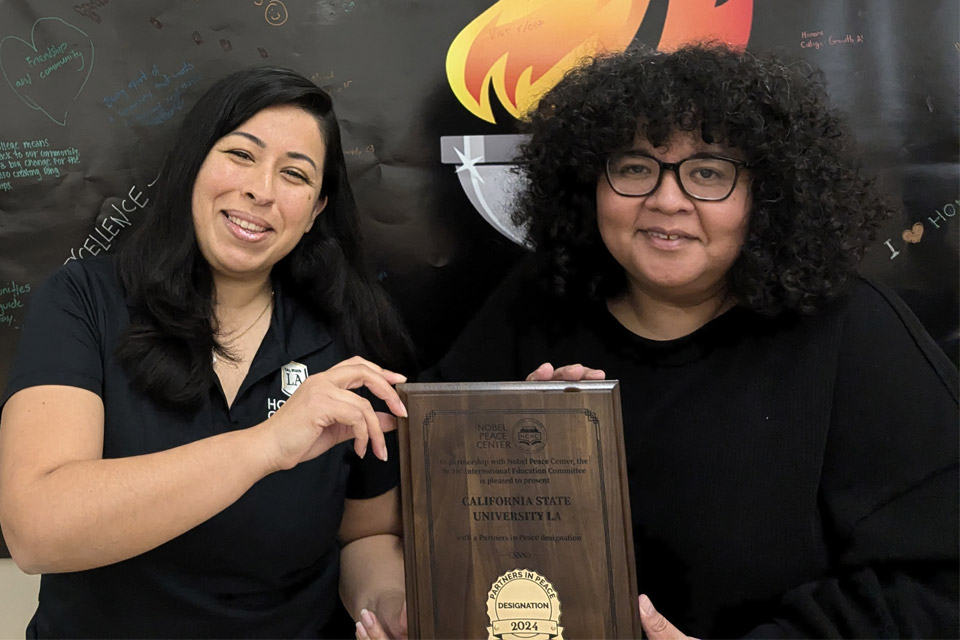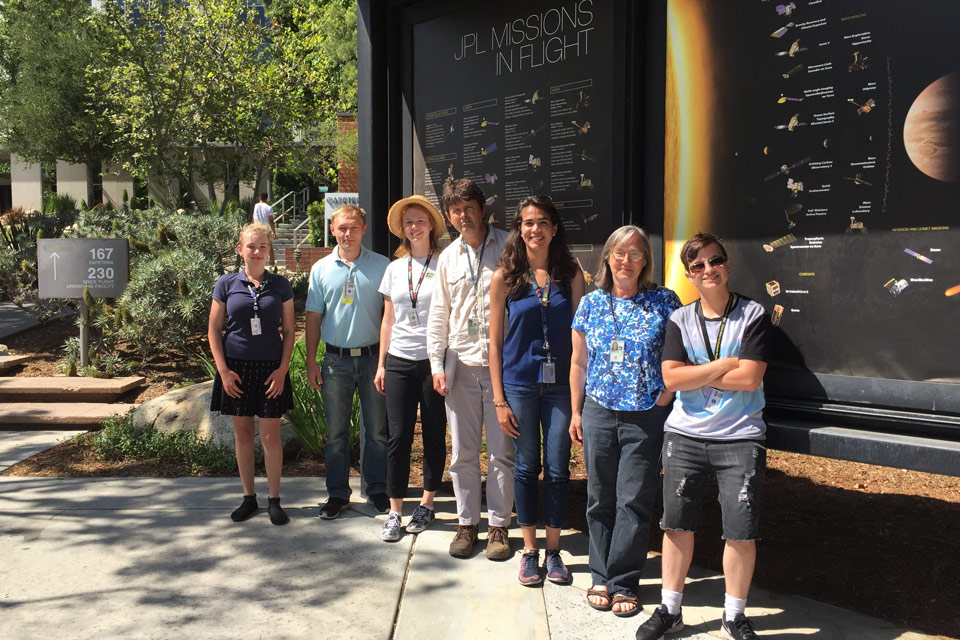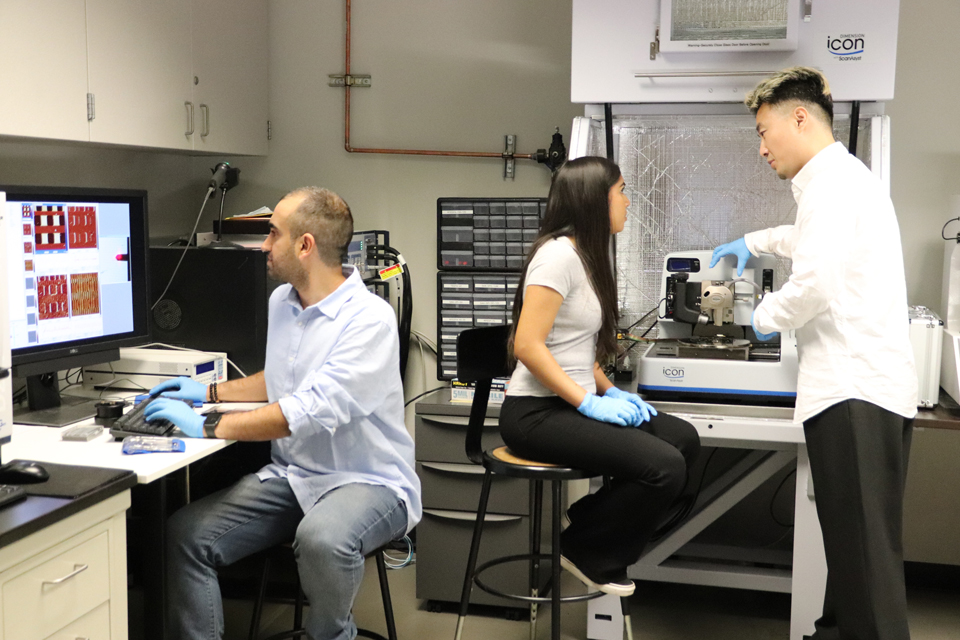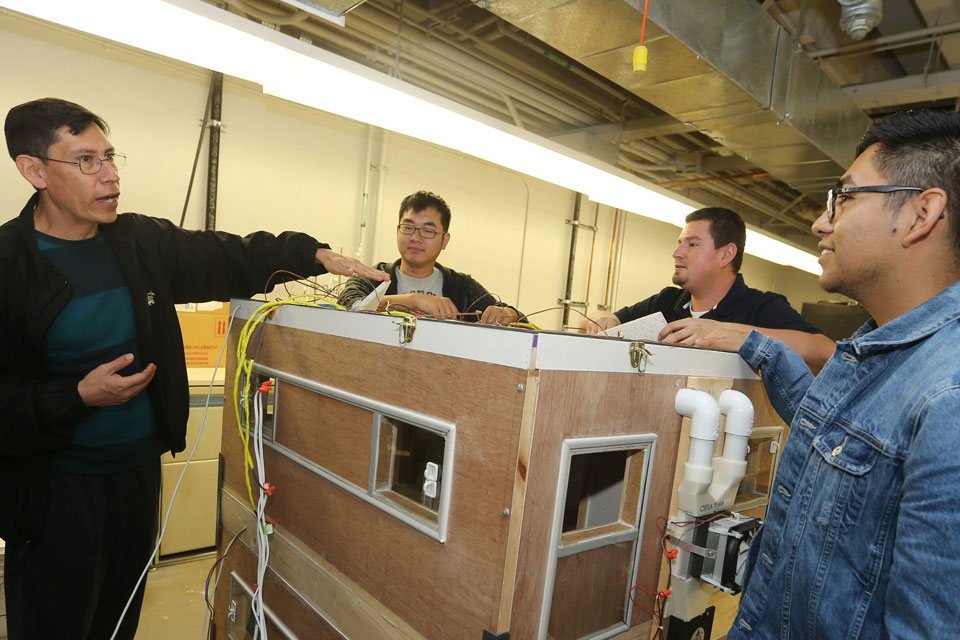Cal State LA Nursing Professor Ali R. Tayyeb plans to enhance his courses this fall with a mix of creative multimedia, including a podcast featuring national nursing leaders discussing topics such as research projects and career development opportunities.
“This experience provides opportunities for us to be more innovative and think outside of the box,” he says.
Tayyeb, an assistant professor in the Patricia A. Chin School of Nursing in the Rongxiang Xu College of Health and Human Services, is one of the hundreds of faculty members who have completed the Center for Effective Teaching and Learning’s Alt-Instruction workshops and Summer Institute in preparation for the fall.
We caught up with Tayyeb, a U.S. Navy veteran and a double alumnus of Cal State LA, to discuss how he is preparing for the fall as part of an ongoing series on faculty members working to develop innovative and engaging virtual instruction.
What courses are you teaching in the fall?
Tayyeb’s courses for the fall include nursing research, nursing leadership and ambulatory care nursing.
What lessons did you learn from remote instruction in the spring?
When the pandemic forced faculty to transition to remote instruction, Tayyeb focused on providing support and compassion for his students.
“I had to really look at my program and ask what is important,” Tayyeb says. “How can I still get them information without overwhelming them because they are also under stress?”
He is keeping this lesson top of mind as he looks ahead to his fall courses, designing them so the content is meaningful and the structure is mindful of the current realities due to COVID-19.
How do you plan to keep your students engaged in the fall?
Tayyeb still plans to incorporate some virtual face-to-face time with his students, primarily to collaboratively delve deeper into course material rather than delivering a traditional lecture.
Communication is also a key strategy to ensure his students feel connected with him as a professor and with the material. “I am communicating with my students a lot more online,” Tayyeb says. “They are not in this by themselves. I don’t disappear between classes.”
What new features or approaches are you incorporating into your virtual courses?
Tayyeb plans to infuse a mix of multimedia and other digital content into his fall courses, including recorded videos of himself, TED Talks, short quizzes and segments from his podcast to add additional dimensions to his courses.
After the pandemic hit, Tayyeb created a podcast, RN – Mentor, which features interviews he conducts with national nursing leaders to enable his students to learn from top practitioners in the field.
In some of the summer courses he taught, Tayyeb paired writing assignments with podcast interviews. “I can see it has been very eye-opening for my students—they have switched how they think about the nursing profession and their options moving forward,” he says.
The interviews have expanded their views of what a career in nursing can be, Tayyeb says, and they have discovered it can reach far beyond a patient’s bedside. “The role of the nursing profession is so much more—we have nurse leaders that are running national programs, we have nurse leaders in Congress, we have nurse leaders as mayors of cities,” Tayyeb says.
What are some of your favorite interviews from your podcast?
“I have interviewed some incredible individuals who have done some incredible work,” Tayyeb says. “I can only hope to be at their levels at some point in my career.”
He highlighted a couple of recent podcast guests, including Monica R. McLemore, an associate professor in family health care nursing at UC San Francisco, and Wanda Montalvo, an executive nurse leader who co-created Nursing Mutual Aid, a national virtual community for nurses and scholars of nursing.
In their podcast episodes, McLemore discusses her work and research into reproductive health and justice, and Montalvo discusses how nurse mentors can move from mentorship to active sponsorship, by not only giving advice, but through active promotion and offering networking opportunities.
What are you most looking forward to in the fall?
“What I am really looking forward to is being able to execute my online content,” Tayyeb says.
He plans to use anonymous polls on Zoom and a mid-semester survey to collect feedback from students on what is working and what’s not, in hopes of continuously improving the virtual instruction experience.
RELATED:
Faculty innovation in the virtual classroom: Q&A with Socorro Orozco, Charter College of Education
# # #
California State University, Los Angeles is the premier comprehensive public university in the heart of Los Angeles. Cal State LA is ranked number one in the United States for the upward mobility of its students. Cal State LA is dedicated to engagement, service, and the public good, offering nationally recognized programs in science, the arts, business, criminal justice, engineering, nursing, education, and the humanities. Founded in 1947, the University serves more than 26,000 students and has more than 250,000 distinguished alumni.
Cal State LA is home to the critically-acclaimed Luckman Fine Arts Complex, Pat Brown Institute for Public Affairs, Hertzberg-Davis Forensic Science Center, Hydrogen Research and Fueling Facility, Billie Jean King Sports Complex and the TV, Film and Media Center. For more information, visit www.CalStateLA.edu.

